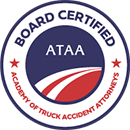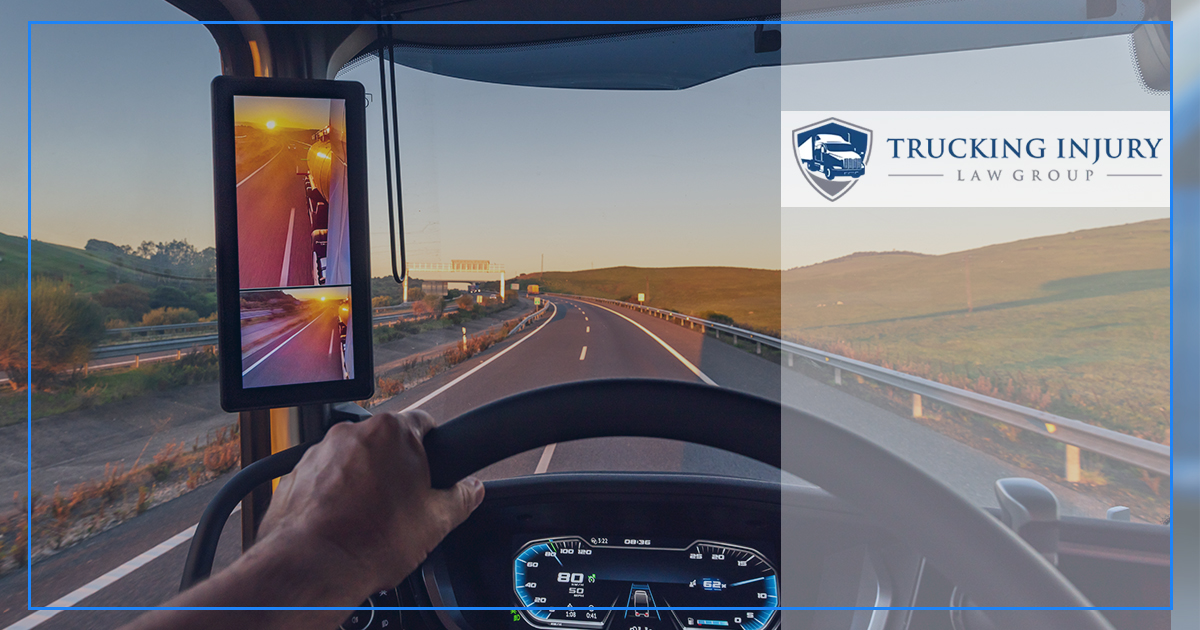Could Driver-Facing Cameras Prevent Truck Accidents?
In today’s world, technology plays a role in almost every aspect of our lives, including the transportation industry. Driver-facing cameras are starting to gain in popularity. These cameras are installed in the cab to monitor the driver’s actions, reactions, and behavior on the road.
Recently, the National Highway Traffic Safety Administration (NHTSA) stated that more than 5,900 lives were lost due to trucking accidents in 2022. Something must be done to prevent further incidents on the road. One answer may be driver-facing cameras.
But is there evidence that these cameras prevent truck accidents? At the Trucking Injury Law Group, we have seen many instances where a driver’s actions behind the wheel led to disastrous results, like head-on collisions or rollovers. More stringent measures must be taken to avoid these accidents in the future.
Let’s look at driver-facing cameras’ potential benefits for preventing truck accidents.
How Do Driver-Facing Cameras Work?
These cameras are strategically positioned within the truck’s cabin to record the driver’s activities.
During the driver’s travels, they can capture certain moments on the road. In the long run, this information can be used to improve safety on the road. Often, the driver-facing camera is in a continuous recording mode. This means that the entire time the driver is on the road will be documented for review at a later date. These settings ensure that nothing goes unnoticed.
However, some cameras are equipped with event-triggered capture. In this mode, if the driver suddenly brakes, serves, or collides with another vehicle, that motion will signal to the camera to start recording.
The main purpose of these devices is to improve driver safety.
A driver-facing camera can help to identify certain dangerous behaviors, such as drowsiness, aggressive driving, and distracted driving. Once noted, the trucking company or the operator can take corrective actions to prevent future incidents.
Benefits of Driver-Facing Cameras
There are many benefits to using driver-facing cameras, one of which is accident prevention. By documenting the driver’s actions, the video footage can detect potential risk factors, such as speeding or fatigued driving.
These cameras can also be used as evidence in a trucking accident. With recorded footage, the driver and the trucking company can either validate their safe driving practices or prove the other driver’s fault. Many times, this video evidence is required in a legal case.
In-cabin cameras can also promote more accountability with drivers. When people know they are being monitored, they are more likely to implement safer driving habits behind the wheel. These individuals may be less likely to be distracted by smartphones or push past their allotted service hours.
When drivers are more conscious of their actions, it can promote a safe environment on the road.
With these cameras, there are many opportunities for individualized training and coaching. The device can provide real-time feedback, which can help train a driver and allow them to learn from their mistakes and improve their road skills. That can lead to better performance and fewer accidents on the highway.
Additionally, companies that use driver-facing cameras can build a company culture around safety.
This focus on safe driving promotes better practices throughout the organization, which can also reduce the chances of trucking accidents on the road.
Challenges with Implementation
However, controversies have emerged surrounding the use of inward-facing cameras in trucks, especially regarding privacy concerns. Some drivers are uncomfortable being constantly monitored, while others have raised concerns about invading their privacy.
Many trucking companies are trying to balance safety and privacy concerns. While driver-facing cameras can help improve safety, drivers must also feel that their privacy is being respected.
Trucking companies need to be transparent about camera usage. By doing so, they can inform drivers about the purpose and limitations of the cameras. When drivers feel more comfortable with a camera in the cab, that can also be another factor in promoting road safety.
Can These Cameras Change Behavior?
There have been several research studies conducted on the impact of driver-facing cameras. According to the AAA Foundation, these cameras can potentially reduce accidents and save lives. Some of their findings concluded that:
- Camera-based systems alerted a disengaged driver 50 seconds before a potential collision.
- Drivers who use a camera were five times more engaged than other drivers.
This real-world data also supports the idea that proactive monitoring of drivers can positively change their behavior.
Driver-Facing Cameras Promote Safety on the Road
These devices provide a valuable opportunity to monitor driver behavior. By reviewing the footage, individuals and companies can identify risky driving habits. In-cab cameras can also assist in identifying and addressing factors that can impair drivers’ ability to operate vehicles safely. In turn, they help create a safer driving environment for all road users.
At the Trucking Injury Law Group, we welcome any new technology that can keep everyone safe.
While we’re here to help victims of these accidents protect their legal rights and recover compensation from responsible parties, we also look forward to a time when these accidents are not a common occurrence on America’s roadways.
Driver-facing cameras may be one way to accomplish that goal.






